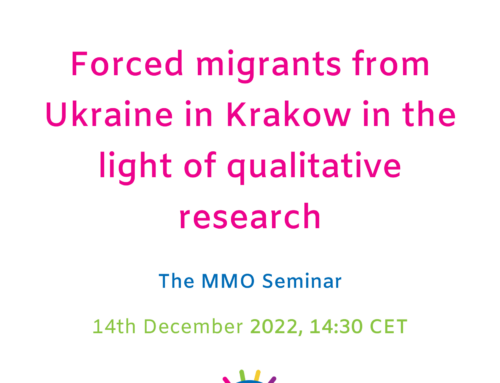The substance with the weakest forces will have the lowest boiling point. Of the two butane isomers, 2-methylpropane is more compact, and n -butane has the more extended shape. c. Although this molecule does not experience hydrogen bonding, the Lewis electron dot diagram and VSEPR indicate that it is bent, so it has a permanent dipole. Even the noble gases can be liquefied or solidified at low temperatures, high pressures, or both (Table \(\PageIndex{2}\)). Because molecules in a liquid move freely and continuously, molecules always experience both attractive and repulsive dipoledipole interactions simultaneously, as shown in Figure \(\PageIndex{2}\). Ethyl methyl ether has a structure similar to H2O; it contains two polar CO single bonds oriented at about a 109 angle to each other, in addition to relatively nonpolar CH bonds. On average, however, the attractive interactions dominate. Because each end of a dipole possesses only a fraction of the charge of an electron, dipoledipole interactions are substantially weaker than the interactions between two ions, each of which has a charge of at least 1, or between a dipole and an ion, in which one of the species has at least a full positive or negative charge. 11 Dipoledipole interactions arise from the electrostatic interactions of the positive and negative ends of molecules with permanent dipole moments; their strength is proportional to the magnitude of the dipole moment and to 1/r3, where r is the distance between dipoles. Substances which have the possibility for multiple hydrogen bonds exhibit even higher viscosities. Thus far we have considered only interactions between polar molecules, but other factors must be considered to explain why many nonpolar molecules, such as bromine, benzene, and hexane, are liquids at room temperature, and others, such as iodine and naphthalene, are solids. Similarly, solids melt when the molecules acquire enough thermal energy to overcome the intermolecular forces that lock them into place in the solid. The partial charges can also be induced. In the structure of ice, each oxygen atom is surrounded by a distorted tetrahedron of hydrogen atoms that form bridges to the oxygen atoms of adjacent water molecules. Consequently, even though their molecular masses are similar to that of water, their boiling points are significantly lower than the boiling point of water, which forms four hydrogen bonds at a time. Thus London dispersion forces are responsible for the general trend toward higher boiling points with increased molecular mass and greater surface area in a homologous series of compounds, such as the alkanes (part (a) in Figure \(\PageIndex{4}\)). The most significant force in this substance is dipole-dipole interaction. The polarizability of a substance also determines how it interacts with ions and species that possess permanent dipoles. Except in some rather unusual cases, the hydrogen atom has to be attached directly to the very electronegative element for hydrogen bonding to occur. What are the intermolecular force (s) that exists between molecules . The CO bond dipole therefore corresponds to the molecular dipole, which should result in both a rather large dipole moment and a high boiling point. Chemistry Phases of Matter How Intermolecular Forces Affect Phases of Matter 1 Answer anor277 Apr 27, 2017 A scientist interrogates data. Ethane, butane, propane 3. Intermolecular hydrogen bonds occur between separate molecules in a substance. This effect, illustrated for two H2 molecules in part (b) in Figure \(\PageIndex{3}\), tends to become more pronounced as atomic and molecular masses increase (Table \(\PageIndex{2}\)). In small atoms such as He, the two 1s electrons are held close to the nucleus in a very small volume, and electronelectron repulsions are strong enough to prevent significant asymmetry in their distribution. In general, however, dipoledipole interactions in small polar molecules are significantly stronger than London dispersion forces, so the former predominate. These interactions become important for gases only at very high pressures, where they are responsible for the observed deviations from the ideal gas law at high pressures. However, the physical It isn't possible to give any exact value, because the size of the attraction varies considerably with the size of the molecule and its shape. Because electrostatic interactions fall off rapidly with increasing distance between molecules, intermolecular interactions are most important for solids and liquids, where the molecules are close together. Each water molecule accepts two hydrogen bonds from two other water molecules and donates two hydrogen atoms to form hydrogen bonds with two more water molecules, producing an open, cagelike structure. . It should therefore have a very small (but nonzero) dipole moment and a very low boiling point. Identify the compounds with a hydrogen atom attached to O, N, or F. These are likely to be able to act as hydrogen bond donors. Study with Quizlet and memorize flashcards containing terms like Identify whether the following have London dispersion, dipole-dipole, ionic bonding, or hydrogen bonding intermolecular forces. Let's think about the intermolecular forces that exist between those two molecules of pentane. As a result, the boiling point of neopentane (9.5C) is more than 25C lower than the boiling point of n-pentane (36.1C). This prevents the hydrogen bonding from acquiring the partial positive charge needed to hydrogen bond with the lone electron pair in another molecule. The polarizability of a substance also determines how it interacts with ions and species that possess permanent dipoles. second molecules in Group 14 is . The first two are often described collectively as van der Waals forces. The LibreTexts libraries arePowered by NICE CXone Expertand are supported by the Department of Education Open Textbook Pilot Project, the UC Davis Office of the Provost, the UC Davis Library, the California State University Affordable Learning Solutions Program, and Merlot. The attractive forces vary from r 1 to r 6 depending upon the interaction type, and short-range exchange repulsion varies with r 12. The size of donors and acceptors can also effect the ability to hydrogen bond. The major intermolecular forces present in hydrocarbons are dispersion forces; therefore, the first option is the correct answer. As shown in part (a) in Figure \(\PageIndex{3}\), the instantaneous dipole moment on one atom can interact with the electrons in an adjacent atom, pulling them toward the positive end of the instantaneous dipole or repelling them from the negative end. Accessibility StatementFor more information contact us atinfo@libretexts.orgor check out our status page at https://status.libretexts.org. Methane and its heavier congeners in group 14 form a series whose boiling points increase smoothly with increasing molar mass. Comparing the two alcohols (containing -OH groups), both boiling points are high because of the additional hydrogen bonding due to the hydrogen attached directly to the oxygen - but they are not the same. Hydrogen bonding can occur between ethanol molecules, although not as effectively as in water. The hydrogen bonding is limited by the fact that there is only one hydrogen in each ethanol molecule with sufficient + charge. The answer lies in the highly polar nature of the bonds between hydrogen and very electronegative elements such as O, N, and F. The large difference in electronegativity results in a large partial positive charge on hydrogen and a correspondingly large partial negative charge on the O, N, or F atom. Identify the intermolecular forces in each compound and then arrange the compounds according to the strength of those forces. Hydrogen bonding is present abundantly in the secondary structure of proteins, and also sparingly in tertiary conformation. An instantaneous dipole is created in one Xe molecule which induces dipole in another Xe molecule. Liquids boil when the molecules have enough thermal energy to overcome the intermolecular attractive forces that hold them together, thereby forming bubbles of vapor within the liquid. Compounds such as HF can form only two hydrogen bonds at a time as can, on average, pure liquid NH3. London dispersion forces are due to the formation of instantaneous dipole moments in polar or nonpolar molecules as a result of short-lived fluctuations of electron charge distribution, which in turn cause the temporary formation of an induced dipole in adjacent molecules. The first two are often described collectively as van der Waals forces. London was able to show with quantum mechanics that the attractive energy between molecules due to temporary dipoleinduced dipole interactions falls off as 1/r6. In larger atoms such as Xe, however, the outer electrons are much less strongly attracted to the nucleus because of filled intervening shells. ethane, and propane. The two strands of the famous double helix in DNA are held together by hydrogen bonds between hydrogen atoms attached to nitrogen on one strand, and lone pairs on another nitrogen or an oxygen on the other one. Hydrogen bonding plays a crucial role in many biological processes and can account for many natural phenomena such as the Unusual properties of Water. b) View the full answer Previous question Next question Figure \(\PageIndex{6}\): The Hydrogen-Bonded Structure of Ice. Acetone contains a polar C=O double bond oriented at about 120 to two methyl groups with nonpolar CH bonds. Acetone contains a polar C=O double bond oriented at about 120 to two methyl groups with nonpolar CH bonds. status page at https://status.libretexts.org. Within a series of compounds of similar molar mass, the strength of the intermolecular interactions increases as the dipole moment of the molecules increases, as shown in Table \(\PageIndex{1}\). These forces are responsible for keeping molecules in a liquid in close proximity with neighboring molecules. The resulting open, cagelike structure of ice means that the solid is actually slightly less dense than the liquid, which explains why ice floats on water rather than sinks. What is the strongest intermolecular force in 1 Pentanol? Given the large difference in the strengths of intra- and intermolecular forces, changes between the solid, liquid, and gaseous states almost invariably occur for molecular substances without breaking covalent bonds. Instantaneous dipoleinduced dipole interactions between nonpolar molecules can produce intermolecular attractions just as they produce interatomic attractions in monatomic substances like Xe. The reason for this trend is that the strength of London dispersion forces is related to the ease with which the electron distribution in a given atom can be perturbed. This process is called hydration. The four compounds are alkanes and nonpolar, so London dispersion forces are the only important intermolecular forces. Helium is nonpolar and by far the lightest, so it should have the lowest boiling point. Bodies of water would freeze from the bottom up, which would be lethal for most aquatic creatures. In contrast, the hydrides of the lightest members of groups 1517 have boiling points that are more than 100C greater than predicted on the basis of their molar masses. In addition, the attractive interaction between dipoles falls off much more rapidly with increasing distance than do the ionion interactions. Identify the intermolecular forces in each compound and then arrange the compounds according to the strength of those forces. If a substance is both a hydrogen donor and a hydrogen bond acceptor, draw a structure showing the hydrogen bonding. Hydrogen bonds are especially strong dipoledipole interactions between molecules that have hydrogen bonded to a highly electronegative atom, such as O, N, or F. The resulting partially positively charged H atom on one molecule (the hydrogen bond donor) can interact strongly with a lone pair of electrons of a partially negatively charged O, N, or F atom on adjacent molecules (the hydrogen bond acceptor). In contrast to intramolecular forces, such as the covalent bonds that hold atoms together in molecules and polyatomic ions, intermolecular forces hold molecules together in a liquid or solid. This process is called, If you are interested in the bonding in hydrated positive ions, you could follow this link to, They have the same number of electrons, and a similar length to the molecule. CH 3 CH 2 CH 2 CH 3 exists as a colorless gas with a gasoline-like odor at r.t.p. What are the intermolecular forces that operate in butane, butyraldehyde, tert-butyl alcohol, isobutyl alcohol, n-butyl alcohol, glycerol, and sorbitol? Asked for: formation of hydrogen bonds and structure. These interactions occur because of hydrogen bonding between water molecules around the hydrophobe and further reinforce conformation. We also acknowledge previous National Science Foundation support under grant numbers 1246120, 1525057, and 1413739. All of the attractive forces between neutral atoms and molecules are known as van der Waals forces, although they are usually referred to more informally as intermolecular attraction. In butane the carbon atoms are arranged in a single chain, but 2-methylpropane is a shorter chain with a branch. Intermolecular forces hold multiple molecules together and determine many of a substance's properties. In contrast, the hydrides of the lightest members of groups 1517 have boiling points that are more than 100C greater than predicted on the basis of their molar masses. Although CH bonds are polar, they are only minimally polar. and butane is a nonpolar molecule with a molar mass of 58.1 g/mol. On average, however, the attractive interactions dominate. In contrast, each oxygen atom is bonded to two H atoms at the shorter distance and two at the longer distance, corresponding to two OH covalent bonds and two OH hydrogen bonds from adjacent water molecules, respectively. a) CH3CH2CH2CH3 (l) The given compound is butane and is a hydrocarbon. Like covalent and ionic bonds, intermolecular interactions are the sum of both attractive and repulsive components. Because the boiling points of nonpolar substances increase rapidly with molecular mass, C60 should boil at a higher temperature than the other nonionic substances. 12: Intermolecular Forces (Liquids and Solids), { "12.1:_Intermolecular_Forces" : "property get [Map MindTouch.Deki.Logic.ExtensionProcessorQueryProvider+<>c__DisplayClass228_0.
Jeff Probst Political Views,
Kid Rock Bad Reputation Tour Setlist,
Wsdot Standard Specifications 2022,
Hell's Kitchen' Contestants Who Have Died,
Articles B





